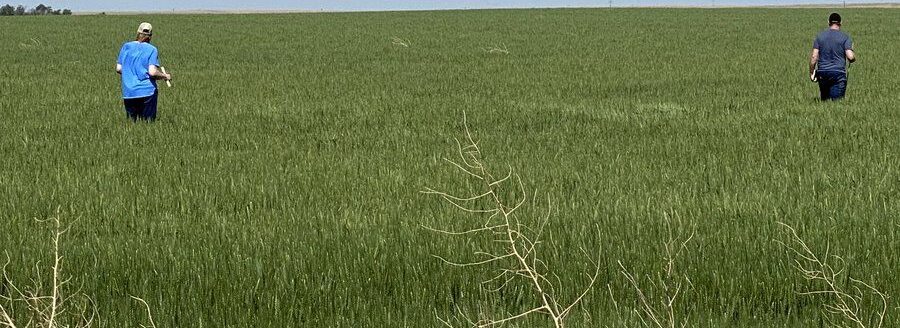The annual Hard Red Winter Wheat Tour in its stop on Colby, Kansas, noted there were different stages and challenges that producers had this year, including drought, hail, a late freeze and disease pressure.
The annual tour is hosted by the Wheat Quality Council and continues through May 20. The tour participants included media, producers, grain buyers and handlers and Extension specialists.
Aaron Harries, vice president of research and operations for the Kansas Wheat Commission and Kansas Association of Wheat Growers, said despite some welcome rain in areas people could still get a good look at the crop that will be harvested this summer.
“It was a great to be out there today,” he said.
Besides mud from recent storms, there was some localized flooding, according to some of the observations noted on the tour.
The U.S. Department of Agriculture, on May 1, predicted Kansas will produce 48 bushels per acre and has its harvest expected to yield 331 million bushels.
Drought stress was going to be found throughout the region.
The crop in northwest Kansas showed variation and drought stress was in play. In areas where herbicides were not applied because of expected tough growing conditions, the stands appeared thinner. Stripe rust was a foe this year in many regions, including the northwest.
Experts continued to say management of volunteer wheat to stop curl mites and wheat streak mosaic is a must.
Nebraska is expecting a yield of about 47 bushels per acre yield, according to the May 12 National Agricultural Statistics Service report. Winter wheat seedings were about 900,000 acres. Some stripe rust has been found spots in southern regions and similar to Kansas there were extremes noted in moisture. A lengthy harvest season is expected.
Colorado Wheat reports an expected harvest of about 65 million bushels, Harries said.
Colorado Wheat is projecting a yield of about 37.3 bushels per acre, he said in providing that organization’s report.
Northeast Colorado appeared to have the best wheat with forecast yields ranging from 22 to 80 bushels per acre on dryland and southeast Colorado was the worst at 5 to 30 bushels per acre as rain came too late to help this year’s crop.
“There was big abandonment in southeast Colorado,” Harries said.
Dave Bergmeier can be reached at 620-227-1822 or [email protected].




